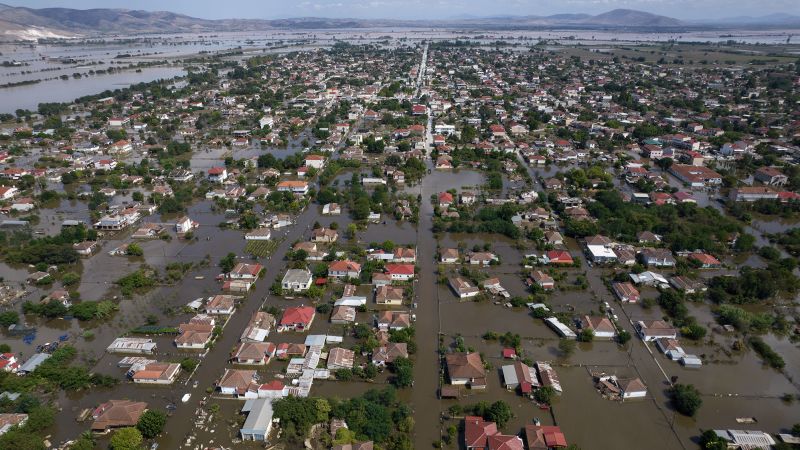Mounting climate risks, illustrated by the extreme heat, wildfires and floods that ravaged parts of Europe this summer, could hurt the region’s economy as soon as this year, the European Commission warned Monday.
In its latest economic forecast, the European Union’s executive arm downgraded its predictions for growth in the region in 2023 and 2024. But even that gloomier outlook could prove too optimistic, it said.
“The materialization of these [climate] risks bears severe costs for the EU economy, in terms of losses in natural capital and deterioration of economic activity, including tourism,” the commission said.
It now expects the EU’s gross domestic product to grow 0.8% this year, down from a 1% rise forecast in the spring. Next year’s growth has been revised to 1.4% from 1.7%.
The commission blamed weak domestic demand, dampened by high inflation, as well as rising interest rates for the downgrades. But it added that there was “formidable uncertainty” over its latest forecast, with extreme weather among the “downside” risks.
Tourism can account for as much as a fifth of annual GDP in some countries in the region. Europeans are already starting to rethink where to vacation in the future after this year’s scorching temperatures in southern Europe and the hottest summer ever recorded on the continent in 2022.
The European Travel Commission, an association of tourism organizations, said in July that the number of European tourists planning to travel to Mediterranean destinations in the summer and fall this year had dropped 10% compared with the same period in 2022. Meanwhile, the Czech Republic, Bulgaria, Ireland and Denmark, where the weather is milder, had seen a “surge in popularity,” the ETC noted.
Travelers from outside the EU may likewise lose their taste for vacations in Italy and Greece, both of which have been battling wildfires. A spokesperson at ForwardKeys, a travel data company, told CNN in July that “there has been a shift in preference towards cooler and more northern destinations” among UK travelers as a result of heat waves in continental Europe that month.
Global warming could dent tourism in another way: by accelerating the erosion of beaches and amplifying wildfires that rip through forests — both part of Europe’s “natural capital,” David Owen, chief economist at Saltmarsh Economics, told CNN.
In a study published last October, the Bank of Italy warned that rising temperatures risked stunting growth in the EU’s third-biggest economy, with tourism and agriculture most exposed.
The blistering temperatures have already been bad news for olive trees, for a second year running, with industry experts warning of skyrocketing prices and potential shortages of olive oil. In Spain, the world’s biggest olive oil producer, production has already plunged.
The full extent of the damage from this year’s heat won’t be known until after harvest time in October and November, but European olive oil production could sink by 700,000 metric tons — a fall of more than 30% — compared with its five-year average, according to Kyle Holland at market research group Mintec.
Construction and manufacturing are among other economic sectors vulnerable to extreme heat, said Owen at Saltmarsh Economics.
“If you’re having to learn to live with temperatures topping 40 degrees [Celsius] for a few days at a time in parts of southern Europe, we don’t function very well at those sorts of temperatures, so it will impact economies more generally,” he added.
Similarly to the European Commission, on Sunday the International Monetary Fund pointed to “grave risks to economic well-being” from climate change.
“G20 members must lead by example in delivering on the promises of $100 billion per year for climate finance,” IMF managing director Kristalina Georgieva said at the Group of 20 summit in India.
“Countries also need to mobilize domestic resources to finance and manage the green transition through tax reforms, effective and efficient public spending, strong fiscal institutions, and deep local debt markets.”
Read the full article here










